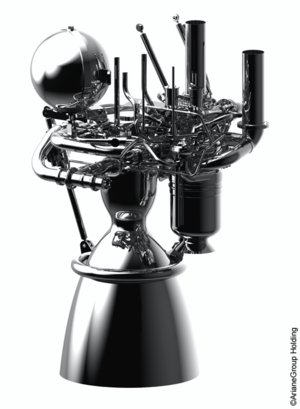Variable Metasurface Antenna Structures
| 665 - Abstract: |
| The present invention concerns antennas with dynamic beam shaping and scanning and proposes a significant reduction of the number of control points required to shape the antenna beam as well as the associated design procedure. This implies a reduction in complexity which translates directly in cost saving for development (easier integration and testing) and launch. ESA is looking for partners who would be interested in licensing and implementing this patent. |
Description:
The invention addresses antennas based on artificial electromagnetic surface (metasurface) having a variable modulated impedance tensor with sub-wavelength variations obtained using a novel dedicated design procedure, object of ESA Patent 616. The main goal of such metasurface antennas is to provide a variable electromagnetic guiding and scattering structure to obtain the desired radiation pattern over a give bandwidth. One drawback of such metasurface antennas is that the guiding and scattering properties of the materials used are generally a fixed input, so that active devices, electrical or mechanical, are required to change the electrical path-length and wave amplitude to obtain changes in the shape of the radiation pattern, if desired. As a result, the range of antenna beam configurations and achievable performances for a single antenna design is limited.
Array-based antennas which are typically used to produce beam pattern changes (e.g., changes of beam shape and/or beam pointing direction) are inherently limited by the segmentation of the aperture and size of their elements, which typically results in a complex and expensive implementation. Also reconfigurable reflectors and the like have a significantly increased level of complexity that makes them difficult and/or expensive to implement.
Attempts to provide for some flexibility in the radiation pattern based on leaky wave antennas, in which some surface impedance modification mechanisms are applied, offer only a single degree of freedom for the radiation pattern, such as elevation scanning. Also metasurface antennas with one or more active elements for each cell of the artificial surface are difficult to implement due to their extreme complexity.
Thus, there is a need for an improved metasurface antenna that allows for a flexible radiation pattern at acceptable levels of complexity.
Metasurface Antennas are based on the use of a special type of scattering surfaces characterised by a modulation of their scattering or impedance tensor (metasurfaces). The surface, which can be flat or curved or faceted, is illuminated by one or more feeding elements (either embedded or external). Several surfaces can be combined to achieve the desired result. The present idea relates most specifically to changes in the local impedance of a single surface.
Metasurfaces can be realised in different ways. Both reflective and translucent metasurfaces are used in antennas. A reflective one has the structure backed by a metal plate conformal to it or has a metallised back surface. A first way of realising a metasurface is by modulating the thickness of a dielectric slab. A second option is by embedding one or more metal layers within the dielectric, each characterised by a pattern obtained by the repetition (tiling) of a basic sub-wavelength cell, according to a selected reference geometry (square, triangular, hexagonal, circular, etc.) with dimensions and orientation changing smoothly across the surface.
Prototypes for both the modulated dielectric thickness and the single-layer metallised patches solutions have been realized. The results obtained for a one-dimensional scan (elevation) show how it is possible to scan over a rather wide angle with a very simple scan mechanism provided that some gain variation is accepted.
Innovations and advantages:
Reducing complexity (and therefore also mass) translates directly in cost saving for development (easier integration and testing) and launch. Also production, qualification and acceptance costs can be expected to be reduced. In particular the flexibility introduced by the variable metasurface allows the use of a single qualified antenna design for a number of applications.
The added degrees of freedom and the simplicity of the basic mechanism, combined with the several possible implementations, can be used to reduce cost, mass, envelope or improve performances.
The direct and extensive dynamic control of the surface guiding and scattering behaviour gives a much wider freedom in shaping the antenna beam than it is available with the usual antenna structures, e.g. phased arrays. Furthermore the basic mechanism is such that different implementations are possible with increasing flexibility and accuracy in the beam shape control at the price of increased complexity and cost.
Domain of application:
The invention can be applied to space RF payloads and instruments (beam scanning, zooming, variable beam shape), to satellite ground terminals (essentially scanning, but also zooming is of interest) and in many other fields.















 Germany
Germany
 Austria
Austria
 Belgium
Belgium
 Denmark
Denmark
 Spain
Spain
 Estonia
Estonia
 Finland
Finland
 France
France
 Greece
Greece
 Hungary
Hungary
 Ireland
Ireland
 Italy
Italy
 Luxembourg
Luxembourg
 Norway
Norway
 The Netherlands
The Netherlands
 Poland
Poland
 Portugal
Portugal
 Czechia
Czechia
 Romania
Romania
 United Kingdom
United Kingdom
 Slovenia
Slovenia
 Sweden
Sweden
 Switzerland
Switzerland


























